Beaches of Sardinia
Tutti gli articoli
Tutti gli articoli
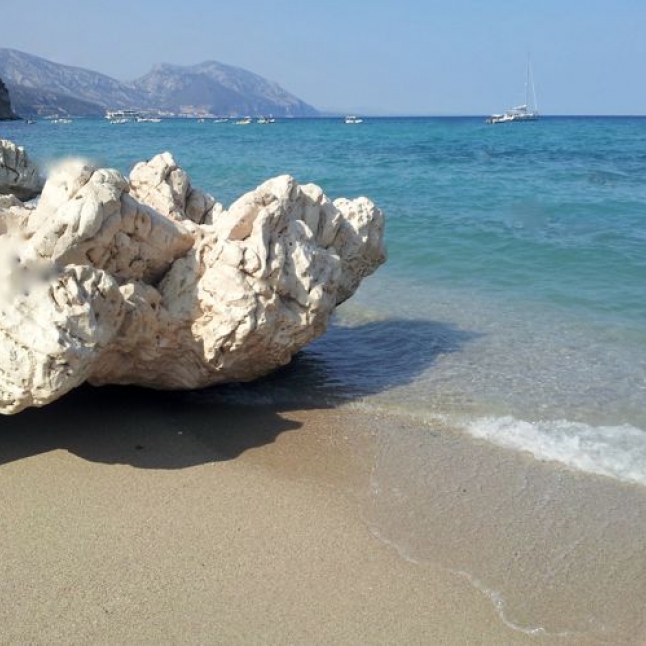
01 June 2015 Cala Luna: a beach between the sea and the mountain
It is 9 o’clock and Sally is seated on the sand of Cala Gonone beach, waiting for the rubber boat where there is the guide who is going to accompany her and other passengers towards territories never seen before. The journey for coming to Cala Luna is long and Sally knows that she will arrive in the afternoon. But, in the interim, dedicates herself to the admiration of the other small coves present in the Gulf of Orosei.
It is 4 p.m. and the guide tells visitors that there are two possibilities: the first one concerns the privilege of entering in the Cave of the Sea Ox and for the other time they can enjoy the beauty of Cala Luna beach; the second one concerns the choice of staying for the whole time in Cala Luna, until the return. In that moment, Sally is embarrassed and she does not know which decision make. But, since she is a lover of the sea and of the suntan, she chooses to stay in the beach and she leaves, with regret, the idea of knowing the Cave about what she heard telling.

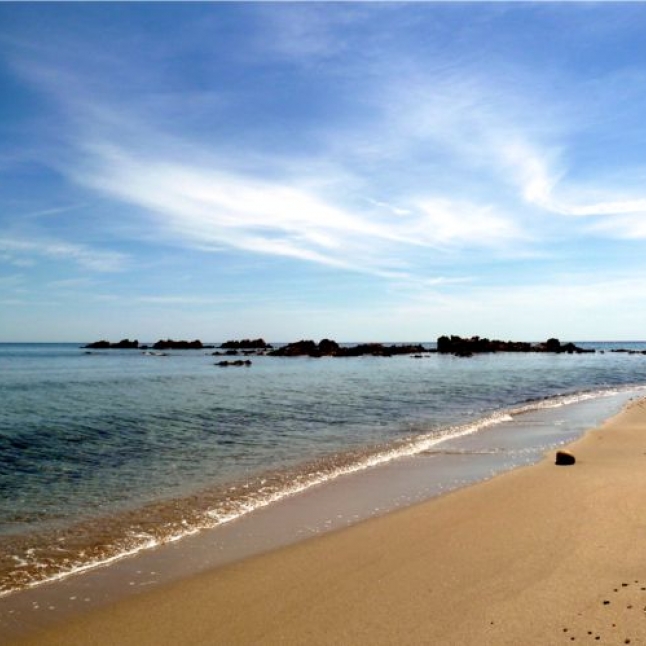
01 June 2015 A summer dream called Lispedda
A Greek myth tells about Perseus, in order to reach and defeat Medusa, the monster with the inexorable petrifying gaze, got oneself three things: a magical bag for storing the severed head, the cap of Hades invisibility and the Hermes’winged sandals. It is not a coincidence that Pegasus, the winged horse that Perseus rides towards immortality and freedom, will be born from the blood of the hard stone Gorgon.
Then, for a strange catharsis, from the stone, from its hardness, it was born the exact opposite: the lightness. Italo Calvino had caught it and he opened his essay "American Lessons" with its stones, the myth and the lightness. There are many stones, colored in red, white, pink and even black in Lispedda.

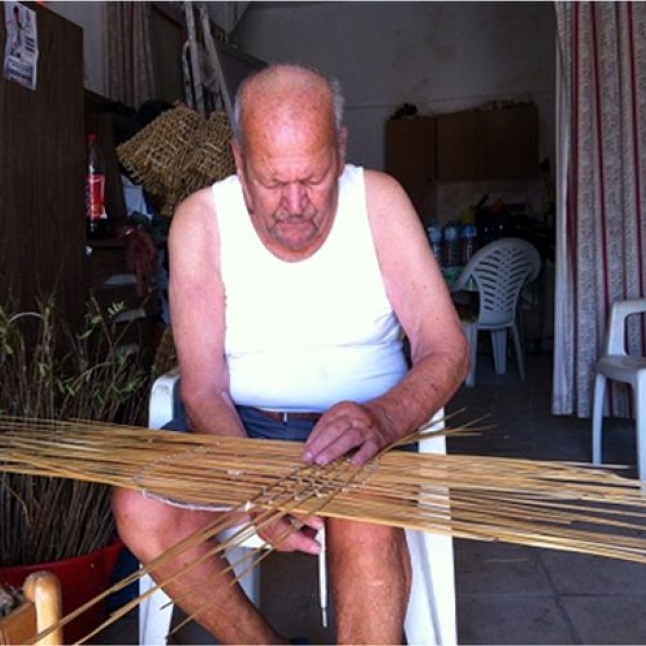
01 June 2015 Carloforte, the island of the island of a peninsula
From the island of the island of a peninsula, says the title of an important festival that is held here at the end of August for twenty years. In fact, the small San Pietro Island, off the south west coast of Sardinia, and Carloforte, the only island town center, live fully in this state of double insularity. With all the difficulties but also with all the glamour that comes with it.
A community of just over six thousand inhabitants that bears a bit as a nuisance the summer crowds of the many vacationers who swarm among the carrugi (the alleyways), beaches and squares and pulling a sigh of relief when, from the first days of September, town regains silences that accompany the rest of the year. It also reclaims the distance from Cagliari that, viewed from here, seems far away. A distance that is shown immediately from the language you speak and which refers to the Ligurian dialect of Pegli and Tabarka, an island close to the coast of Tunisia, where at the half of '700 a small community of coral divers came to populate the island, courtesy of Carlo Emanuele III of Savoy, bringing with him, in addition to the language, courses such as cascà, couscous with vegetables that is one of the dishes that best characterize, along with the tuna, the local gastronomy.

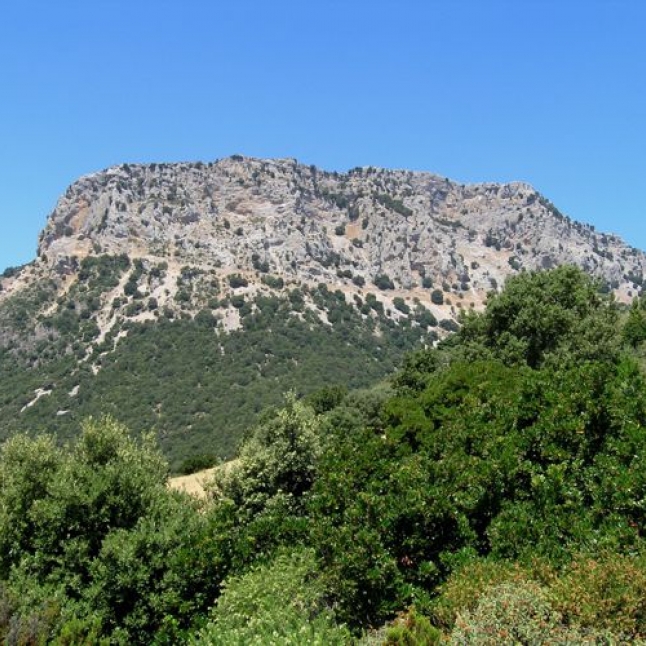
01 June 2015 Among the plateaus of Ogliastra, the timeless charm of Ulassai
In the heart of Ogliastra, ancient and wild territory of central-eastern Sardinia, rises, among the many rich centers of interest, a village, famous for its limestone plateaus, for one of the most beautiful and largest caves of Europe, for an ancient and highly acclaimed textile production and for being the birthplace of one of the greatest Sardinian artists of all time: Maria Lai. We speak about Ulassai, charming urban center of Ogliastra with a stunning variety of karst landscapes and very rich artistic heritage.

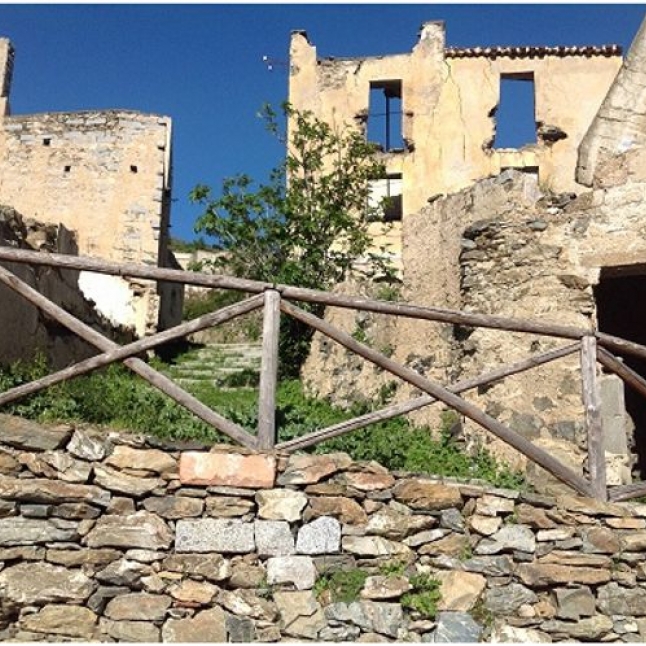
01 June 2015 Gairo vecchio, a fragment of lost Sardinia
Sardinia is rich of unspoiled places, magical and abandoned, but if you talk about ghost villages, it is impossible do not remind Gairo Vecchio. Amongst the abandoned villages of Sardinia the most famous is this one in the heart of Ogliastra. A name that says a lot about its fate: "ga" and "roa", or " flowing land".
A destiny marked by the fury of nature that has enshrined its final abandonment; an epilogue that has its origin long ago, precisely in its name, although not everyone agrees with its origin, as some researchers that suppose it comes from the transformation of the city name of Galilium, an ancient center of Galilenses (mountain tribe of Sardinia from the Gerrei area, defeated by the Romans).

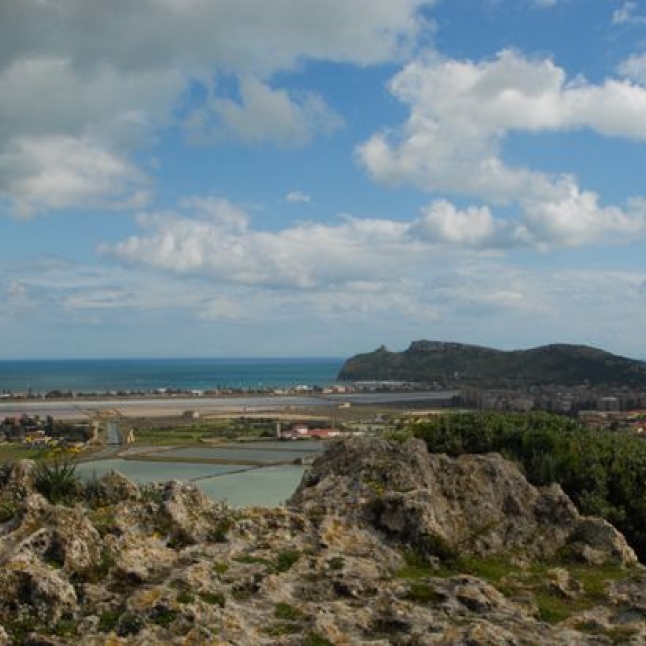
01 June 2015 The lost paradise of Poetto beach
At the end of the Campidano plain, in the south of Sardinia, by the splendor of the Golfo degli Angeli (the Bay of Angels), there is Cagliari, the city of the sun. Who arrives from the sea sees it (OK) white and bright, thanks to the medieval walls of limestone, but also to the two ponds protecting it (OK): Santa Gilla and Molentargius that, reflecting the light, make it seem to shine on his own.
To the west, beyond the haven and the harbor that reflects the finest buildings of the city, a long stretch of sand comes across to the mountains of Capoterra. The first section is Giorgino, once the beach for election of Cagliari, now no longer viable because of the waste released from the most recent industrial activity.

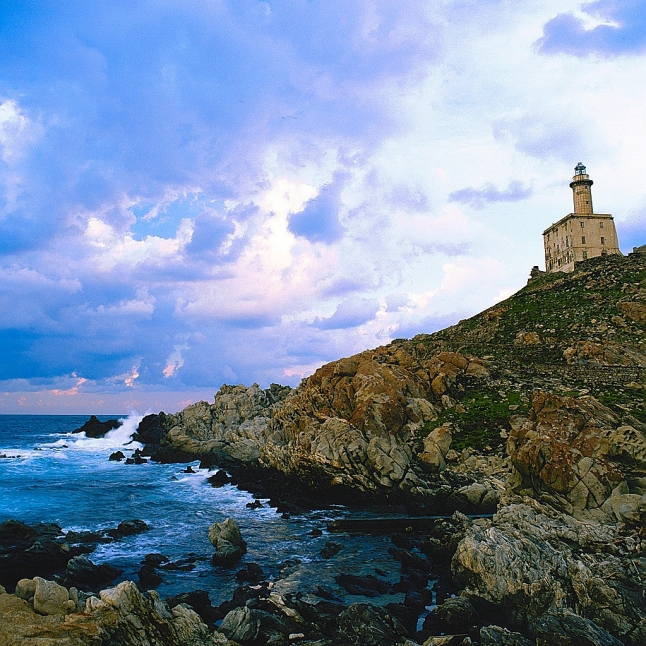
01 June 2015 The National Park of Asinara
Island in an island, Asinara is constantly swept by the wind and tormented by the sea in movement that has molded, over the millennia, the coasts. Ancient land, recent studies have highlighted a Hercynian suture (Carboniferous, first half of the Paleozoic) along the Asinara - Posada line that date back the rocks 950 million years ago. Its history is lost in the mists of time, therefore, from which draws one legend describing it as the island of Hercules, the Herculis Insula, where it seems he passed by in his adventurous journey to the West.

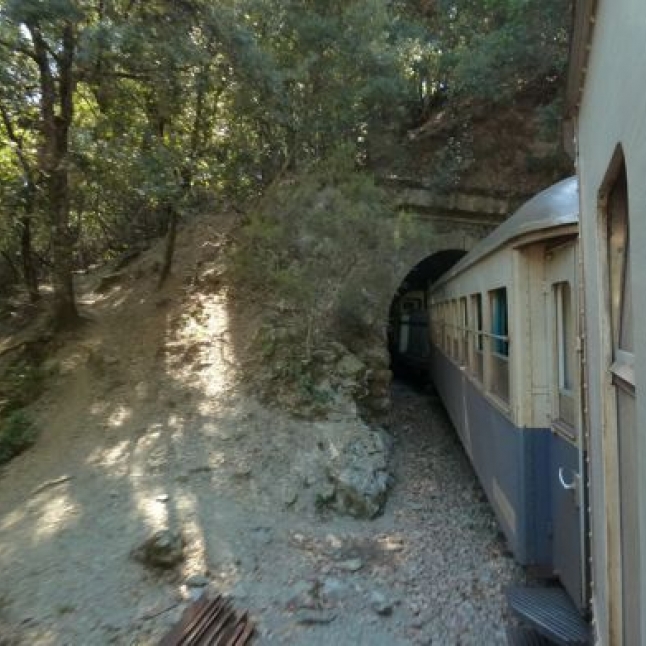
01 June 2015 The "green train" of Sardinia
In the heart of Sardinia, between the Gennargentu Mountains and Mount Arbu, you can spend a whole day, unique in its kind, on board a train of the State Railway: the famous "Trenino Verde": the small green train.
The most characteristic route that the service provides is the round trip from Arbatax to Mandas. It starts in the morning, at about from the small station of Arbatax or, if you are late risers, from that of Lanusei that leaves a few hours later. It is appropriate to bring a picnic lunch, or better, to book a stop in one of the cottages and restaurants that you can find during the passage of the train: a Taquisara Gairo, Seui, Niala, Sadali, or, finally, in Mandas.
The menu is great, typical, full of local produce, accompanied by a delicious hospitality and scenery natural primitive and almost surreal.
The traveler of the green train is then protagonist. Free and carefree he can travel on board of the old and noisy train, very slow, shaky and unsteady, but allows you to see the surrounding landscapes: holm, oaks, Mediterranean maquis, and even small families of beautiful horses, wild boars and majestic Sardinian deers, by rapid and short shots. No less fascinating the railway architecture: high pierced iron bridges and tunnels of Sardinian granite, small stations evoke an atmosphere of bygone days.

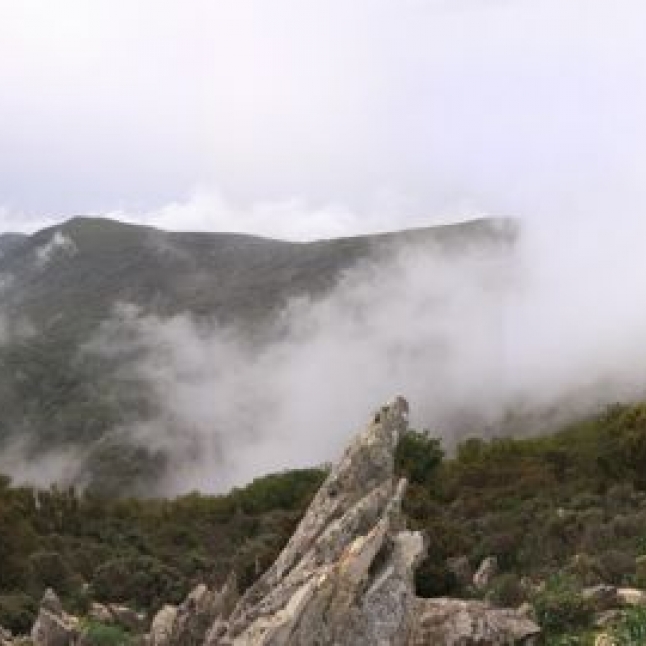
01 June 2015 The tourism of excellence of Castiadas
We are in Sarrabus, a sub-region situated in the extreme south east of Sardinia, in the province of Cagliari. Characterized by a predominantly agricultural and pastoral economy, today Sarrabus is also synonymous of tourism excellence for its crystal-clear waters and white fine beaches that run for dozens of kilometers from Villasimius to the mouth of the river Flumendosa.
But are the inland areas of the territory that give interesting surprises. Starting with Minni Minni towards the mountains of the Sette Fratelli (Seven Brothers), regional park, to the mountain forests of Villaputzu, it is an only unspoiled environmental heritage, where plants, ancient trees and rare species of fauna are still huts of yesteryear.
It is in Sarrabus where the long granite ridge that crosses Sardinia, from Gallura to the south, emerges between Capo Ferrato and Capo Carbonara.

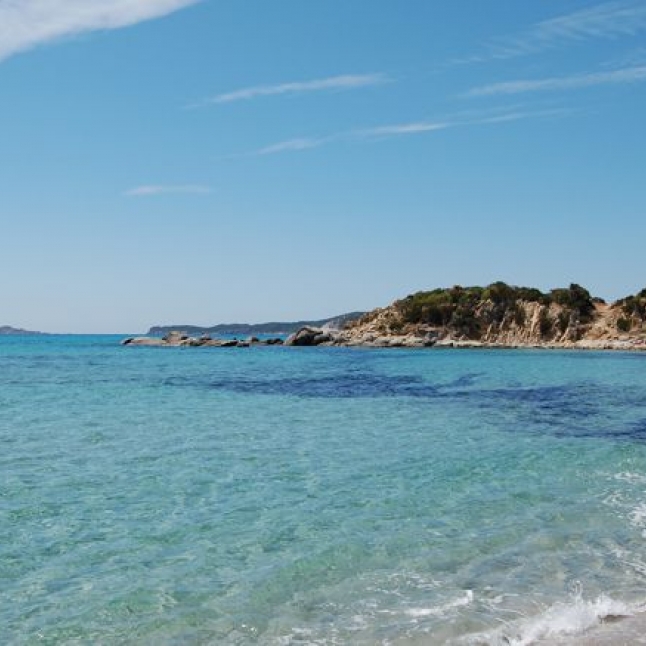
01 June 2015 The green magic of the Villasimius coast
Green as the emerald sea, as the undergrowth in autumn, green as the almond trees in summer or as the Marine Protected Area of Capo Carbonara. However, not many people know that Villasimius spreads all its beauty in the spring. You could not stop once past the isthmus of Capo Boi, the hair windswept and salt that stings the nostrils, to admire so much wonder. A green dies in another, resurrects little further, blurring into the blue, climbs up to purple, dots the golden sand, than shining in the lighter tones of the glades with the new grass.

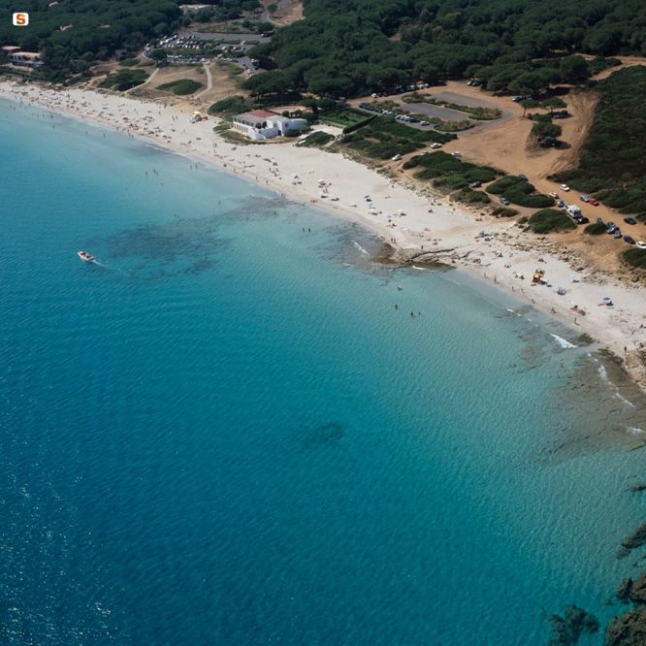
01 June 2015 Le Bombarde, a jewel among the volcanic rocks
The pinewood characteristic of the Mediterranean and the volcanic rocks surround the Bombarde beach, situated in the homonimous locality of the town of Alghero or S'Alighera (place of seaweed), Sardinian name resulting from the accumulation of posidonia along the coast, performance on the back of the currents of the sea. The posidonia bed, endemic throughout the Mediterranean basin, is considered a good indicator of the quality of marine waters.

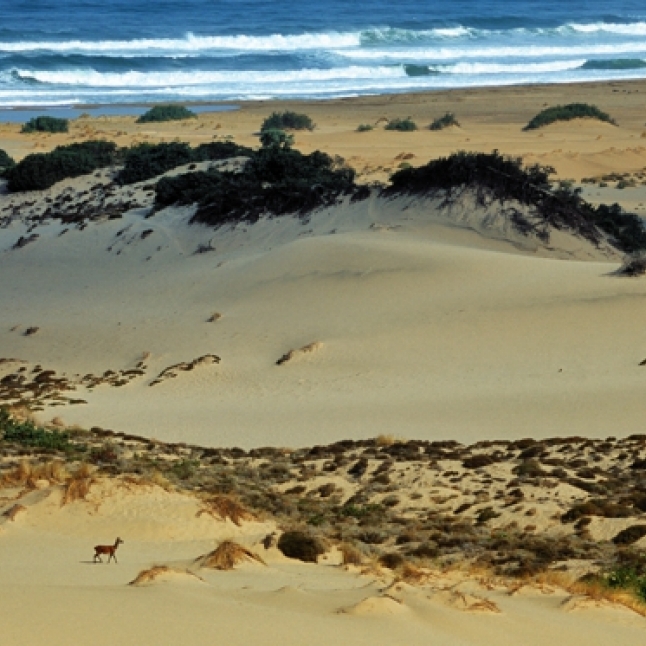
01 June 2015 Piscinas dunes, the Sardinian desert
There are landscapes that only Sardinia can have and, fortunately, they are still uncontaminated. District of Arbus (VS). West Sardinian coast. Here you can admire an out-and-out sand desert: Piscinas dunes.
This place is one of the most beautiful and charming spots of the whole Sardinia and the dunes represent one of the biggest wonders of the Mediterranean Sea. Piscinas is an out-and-out desert in miniature, composed by majestic golden dunes, high more than fifty meters, and they penetrate in the inland for two kilometers.
The landscape shock that is produced lets the visitor out of breath. A fragment of Africa embellished by the peculiarity of the Sardinian scrub. A wonder of the nature and an unmissable destination if you decide to make a holiday in Sardinia.

01 June 2015 The natural architecture of the Cave of the Sea Ox
Sally, before leaving again, chose Cala Luna beach to enjoy the whole time available for her journey. On the contrary, her mates of the minicruise, through the rubber boat, prefer both the excursion in the Cave of the Sea Ox and the exploration of Cala Luna beach. For instance, Paul is a lover of the art created by Nature itself and, after an accurate research, now he knows perfectly that the Cave of the Sea Ox shows views of natural architecture and sculpture.

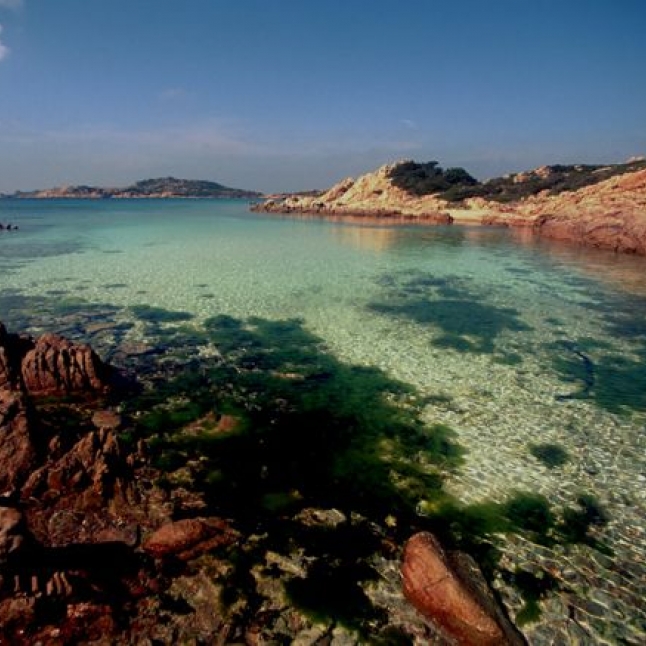
01 June 2015 The archipelago of La Maddalena and its magnificent beaches
The archipelago of La Maddalena, situated in the northeastern coast of Sardinia is made up of seven main and more than fifty smaller islands. The largest islands: La Maddalena, Caprera, Budelli, Spargi, Santo Stefano, Razzoli and Santa Maria, granitic and schistose, they conserve geo-marine conditions of great natural value, thanks to the fact that over time their environmental value remained almost intact.
The area represents a geo-marine park that includes about five acres of land and fifteen of sea. The park includes all the main and the smaller islands, forming one of the most picturesque landscapes in the world, for a variety of reasons ranging from the geographic location to the morphology of the territory, from the landscape to the marine biodiversity.

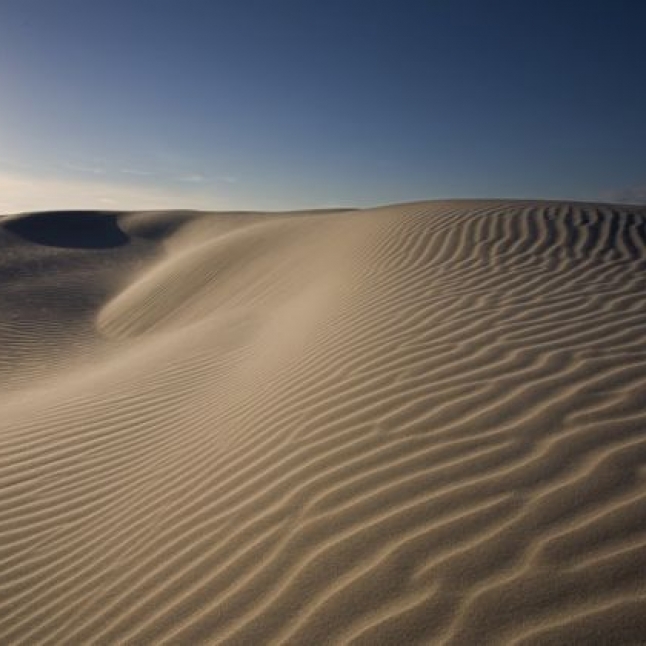
01 June 2015 The emerald water and the rich vegetation in Porto Pino
Called the "Pearl of the Mediterranean" for its charming scenery landscape, Porto Pino is a reference point for the touristic centers of the southern Sulcis, stretching along the southwest coast of Sardinia, overlooking the Gulf of Palmas, between the Sant 'Antioco island and Cape Teulada.

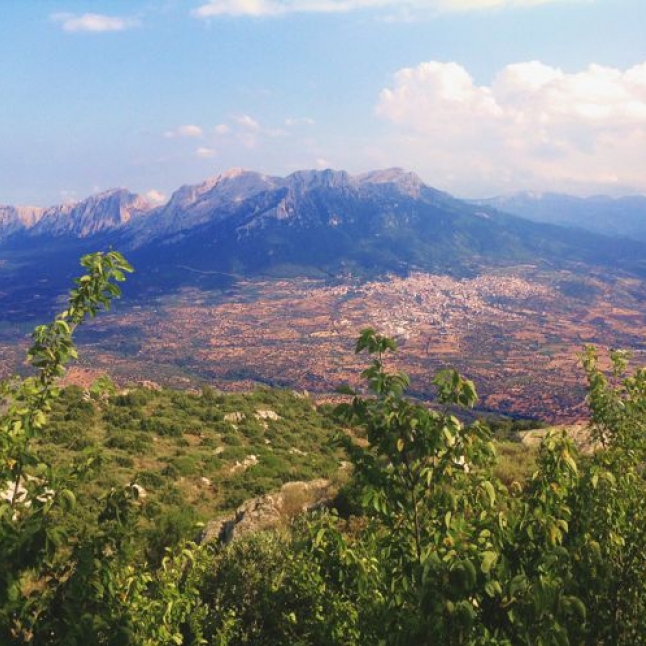
01 June 2015 Oliena, a pearl of Supramonte
Oliena, a beautiful village very close to Nuoro, has many reasons to be visited. The scenery in which the village stands, at the foot of Monte Corrasi, is unique. Famous for its handicrafts, its cuisine and for extraordinary filigree jewelry, is also known for the quality of its wine and the pristine beauty of its Supramonte.
To demonstrate the importance of its tourist offer, the village obtained the "Orange Flag", awarded by the Italian Touring Club, which tends to reward quality and efficiency of inland tourism. It is one of the six municipalities of Sardinia which can boast this prestigious award. Oliena, through its impressive cultural, historical and environmental heritage, an efficient touristic service, a remarkable expansion of the products of its territory and a successful promotion of shows and events, has managed to carve out an important role in inland tourism of Sardinia.

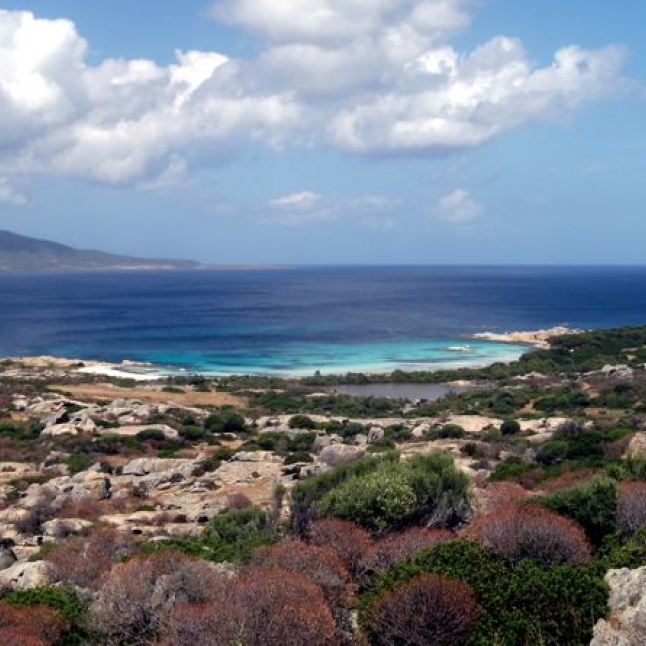
01 June 2015 Asinara, the extraordinary path of granite
A genuine breeze and the sun, that hides away between the clouds, receive the tourist. From the small and picturesque port of Stintino (SS), you can set sail towards a mystery and uninhabited island. Its outline appears in the background, mixed up among the clouds. The sea is calm; it is deepest blue. Everything is ready for a different day, for a dive in the wildest nature.

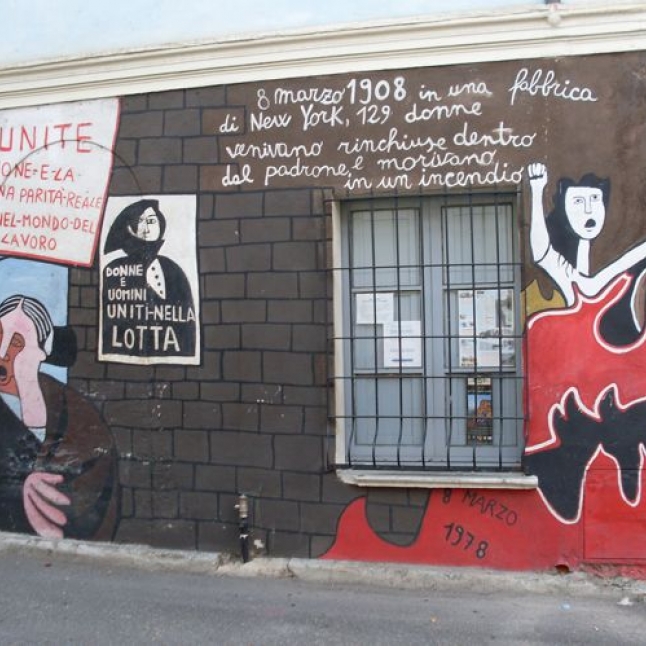
01 June 2015 Orgosolo the village of murales and Supramonte
In the heart of the Barbagia and in the heart of the Supramonte there is Orgosolo, Sardinian district where there are more or less four thousand inhabitants, famous in Sardinia and in Italy, but, out of the national territory, too, above all for its murales. They are the symbol of the village and together with its uncontaminated landscape represent one of the most beautiful "business card" of the whole Sardinian hinterland.
For talking about Orgosolo, the first step is explaining something about the precious murales. These splendid fragments of memory represent an out-and-out open air. In the roads of the village, almost two hundred pictures are articulated on the walls of some houses and they tell the history of the community of Orgosolo and something else. These frescos tell about big conquests, and big insurrections of Sardinian population, tell histories of daily life, political fights and wars. They make important social speeches as unemployment, drought and famine. Large-scale effort subjects, as the fight to the feminine emancipation and of firm condemnation, as the events of Pratobello. Eventually, this stupendous good, became patrimony of everyone, because the voice of murales arrives at whoever identifies himself in the fight, in the redemption and in the right and civil protest.

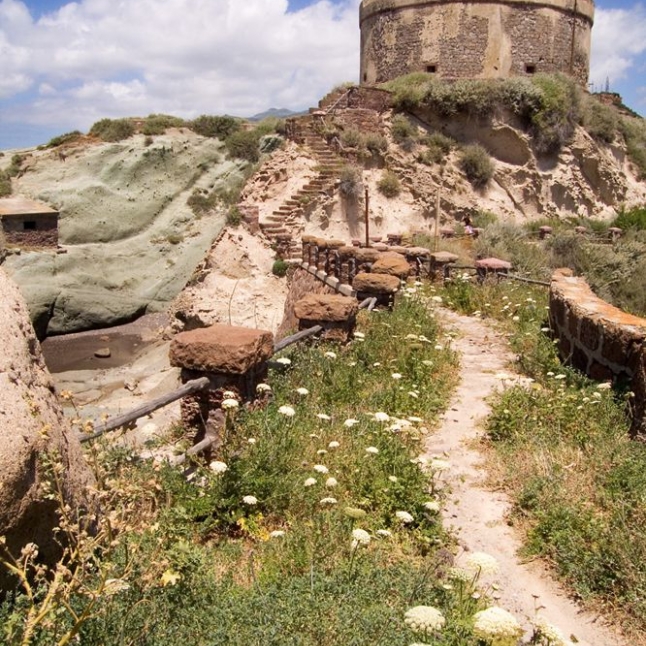
01 June 2015 Bosa Marina, a historical beach
Sardinia reveal itself with picturesque scenery and pristine harmony of its coastlines. This is shown by the beach of Bosa Marina, located at the south of the mouth of the Temo, the only navigable river in Sardinia with flatboats. The clarity and cleanliness of the sea water allows it to receive regularly the "5 Vele of Legambiente" an award that goes to the most clean Italian beaches, placing itself among the best Italian ones. It consists of a stretch of golden sand of about one kilometer that faces an immensity of emerald green with significant shades of blue.

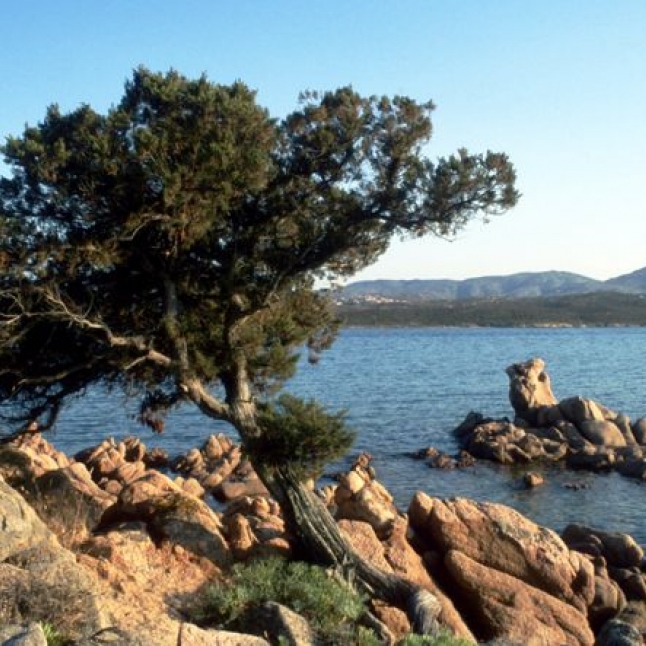
01 June 2015 A postcard landscape: Porto Istana
The idyllic composition of colours of the sea and the sun lights that reflect on the water make Porto Istana as a tourist destination which has a strong charm. Its place name is addressed to the small port of the dock of the boats. The cove extends to few kilometers in the South of Olbia, district of the North-East Sardinia, delimited by rocks and vegetation typical of the Mediterranean scrub, despite a composition of a group of four beaches that are divided by some rock zones. It is well linked to Olbia through ferries and public vehicles and it is provided with many services, that make the stay nice and comfortable: minimarkets, restaurants, bars and tobacconist’s, rental of skates and boats, pay parking. The sea flora and the abundance of fishes attract the lovers of scuba diving and of snorkeling, which is a sport that is played swimming through only the aerator to a depth from zero to five meters.

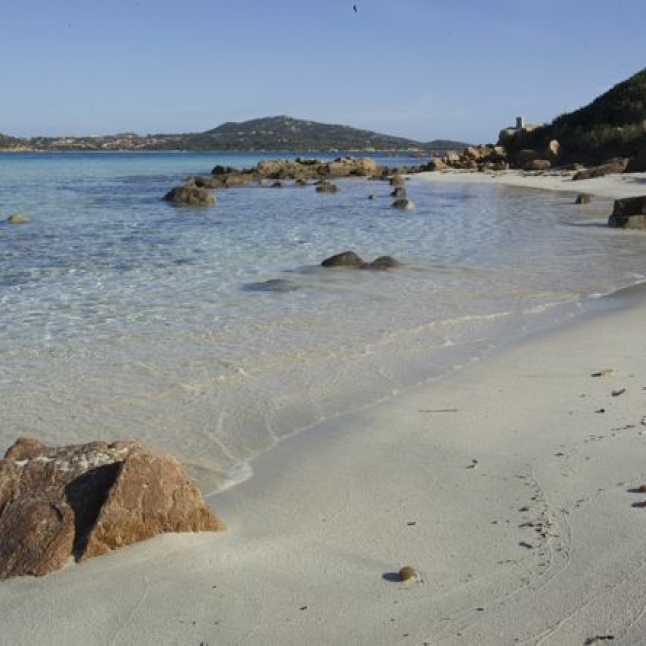
01 June 2015 Brandinchi, the small Sardinian Tahiti
There is a beach in Sardinia, by an enchanting beauty, which has been given a nickname that leaves little doubt about its beautiful aspect. In the coast of San Teodoro, in the locality of Capo Coda Cavallo, it is a small cove, Cala Brandinchi, dubbed the "Sardinian Tahiti".

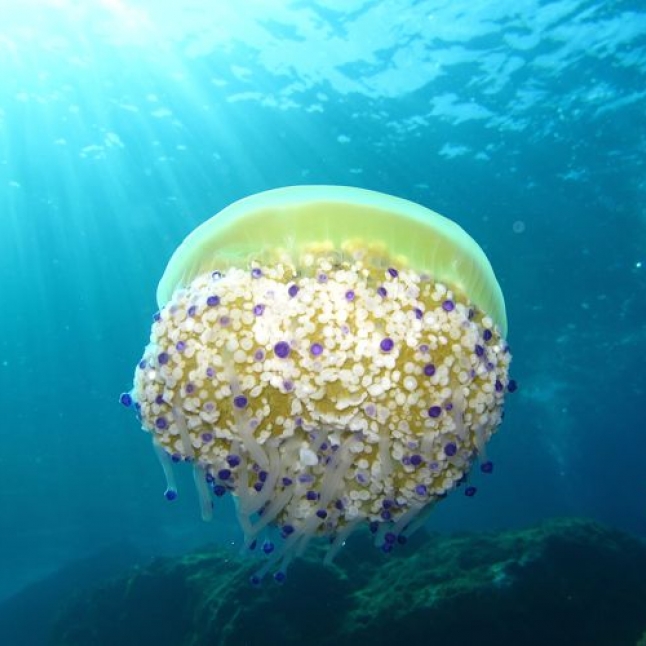
01 June 2015 Under the sea of Buggerru: shoot the enchantment
Luciano Concas, the doctor of Arbus, enamored of his village and the coast of that, tells the story of a passion nurtured with the constancy of a man bewitched by the beauty of the places to which he feels to belong, body and soul. Luciano Concas explores the seabed and photographs the wonders when it, along with the friends who share with him the same attraction, the sea gives them permission to be filmed in its most secret recesses. Because the sea shows its surprises to those it wants and those who respect the silence and guess the paths.
We are in Buggerru on west coast of Sardinia, well known by miners and those who want now to visit the remains of ancient mining activity - perhaps Roman Metalla was here - and that, in ''800, grew in proportions as important to employ a considerable number of people, often exploited and abused. It is famous the bloody repression of the strike of September 4 1904 which killed three miners and injured many others and which provoked the first general strike in Italy. Buggerru was built in 1864 with the expansion of the mining activities and today it is a small village of just over one thousand inhabitants. It has a port, a coast, the sea and beaches of the most beautiful imaginable.
